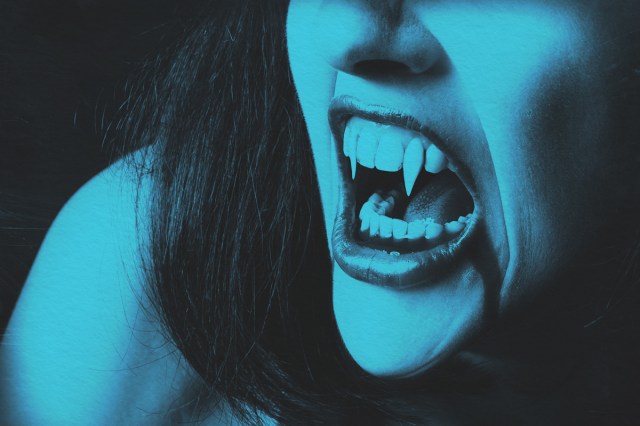
Halloween parties give even the most timid wallflower a chance to put on a new persona and become the life of the party. Between the “Monster Mash” and the costume contests lies the art of good (spooky) conversation. Brush up on these chilling words and their histories so you can impress the witches, zombies, and superheroes alike with your knowledge of the language of Halloween.
The verb “haunt” might call to mind a crumbling mansion with ghosts and evil spirits wandering cobwebbed hallways. But for centuries, “haunt” was more neutral, and implied just visiting a place often. Around the 1500s, the ghostly connotation crept in, and “haunt” began to reference distress and harm. A nice walk through a haunted house on Halloween is just what the mad scientist ordered.
The word “ghost” has been in use for at least a thousand years, and as a noun it originally referred to someone’s vital spark or intelligence. Eventually the usage morphed into the souls of the dead. The Old English spelling was both gost and gast (the root of “ghastly”), but it turned into “ghost” by the end of the 16th century. This was also when the usage as a spiritual soul of someone, distinct from the physical nature, came into use. The usage of “ghost” to mean “an apparition, a spectre, a phantom, often haunting a specific location” has been in use since at least the 12th century, but it was not the primary usage until a few centuries ago.
The most modern usage of “ghosting” refers to disappearing from someone’s life (usually romantic relationships) without a trace, but the word has been used as a verb for centuries. In the 17th century, Shakespeare used “ghosted” in Julius Caesar to describe Brutus hanging around a location. Another usage, going back to the 17th century, uses “ghost” to refer to someone being an annoying presence. A more modern usage refers to smooth, gliding movement, perhaps in the manner of a ghost. A 2020 Guardian article referenced an athlete as such: “He dribbled past five England players before ghosting away from Shilton.”
If you spot a specter draped in a sheet at your Halloween party, charm them with your etymological knowledge of this ancient term.
The myth of the bloodthirsty undead preying on the living dates back to ancient Greece, meaning it’s older than the word to refer to the aforementioned undead, “vampire.” The original name of the creepy creature came from Eastern Europe, where Serbian stories about the vampir were popular in the early 18th century. “Vampire” was popularized in English through late 19th-century Gothic novels (Dracula by Bram Stoker was published in 1897) and has been sucking our blood ever since. The “vampire” bat moniker was given to a species of South American bloodsucking bat by a biologist in 1774, and the term “vamp,” referring to a seductive woman, was coined in the early 20th century.
Originally a Gaelic word meaning “woman of the fairyland,” this fanciful term acquired a dark turn through its lore. In legends, banshees are the spirits of women who scream outside the windows of doomed households. If you heard one wail, you would know someone in your home would die before daybreak.
Over the centuries, “goblin” has come to represent a creature more mischievous than monstrous. The word comes either from the Greek kobalos, which is a mischievous sprite, or the German Kobold, which is a spirit that haunts houses and lives underground in caves or mines. The goblin representation in myths and literature exists anywhere on the scale from playful and full of pranks, to ugly yet harmless, to menacingly evil.
Meaning “a visible disembodied spirit,” the word “specter” is rooted in the Latin spectrum, which means “image or apparition.” The verb form is specere, which means “to look.” Many English words pertaining to appearance have come from the same verb: “spectacle,” “inspect,” and “conspicuous,” to name a few. Specters can also be ghostly, fearsome visions conjured by the imagination. Or are those just Halloween decorations?
Historically, a wraith is the replica of a living person appearing as a specter to foreshadow something bad, like that person’s death. (The wraith might also appear directly after someone’s death.) An old synonym for the ghostly appearance of a living person is “doppelgänger,” but now this German loanword is more commonly used for someone who looks exactly like another individual. Perhaps you’ll find your doppelgänger at a party if you dress up as Carmy from The Bear or the witch Agatha Harkness.
Although it shares letters with the Old English words ghost and ghastly, “ghoul” didn’t enter the language until the 1700s. The word was introduced to the West by the translation of One Thousand and One Nights (sometimes known as Arabian Nights) into French. In the book, the Arabic word ġūl was used to describe an evil being who robbed graves and ate corpses.















